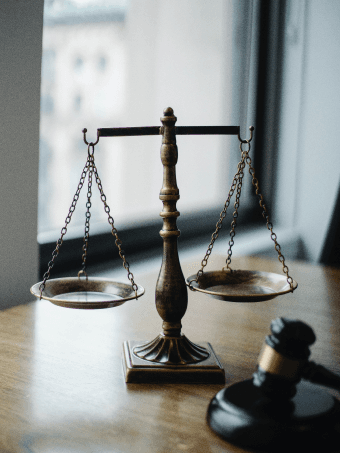
According to Statista, there are more than 4.59 billion active social media users today, and that number is expected to increase to nearly six billion by 2027. Social media is no longer just a place to connect and socialize with friends and family. As indicated in the data gathered by SCORE, 77% of small businesses use social media to help build brand awareness, facilitate customer service, and increase revenue. For example, data from Meta shows that 83% of Instagram users say they discover new brands while using the platform. The way in which information spreads across social media provides unlimited avenues for a starting business to capture the attention of its target audience and turn them into loyal customers.
Social media helps businesses to:
attract customers, get customer feedback and build customer loyalty
increase market reach, including international markets
do market research and reduce marketing costs
increase revenue by building customer networks and advertising
exchange ideas to improve business model
increase traffic to website and improve its search engine ranking
keep an eye on competitors
The benefit of using social media to facilitate business growth is indisputable, making it worthwhile to think about how you should approach your social media strategy. With that said, it’s imperative for companies to immediately claim brand trademarks on social media, regardless of whether or not they have immediate plans to utilize the platforms.
1. Register your trademark
A trademark protects your company from competitors by providing you exclusive rights to use your name, logo, or slogan in connection with your goods or services. Registering your brand as a trademark also protects you from competitors who try to use a confusingly similar name for their business in an effort to take advantage of the time, energy, and effort you have spent building your company. Protecting your trademarks also increases the value of your brand if you decide to sell your company or take it public.
A registered trademark can be used to quickly resolve a hosting domain dispute, mitigating the risk of cybersquatting and ensuring that competitors cannot benefit from relying on similar commercial impression. When it comes to most popular social media channels such as Facebook, Twitter and Youtube, a registered trademark provides an automated conflict resolution process to ensure that opportunistic individuals cannot occupy the desired account name for a registered trademark holder.
2. Monitor your trademarks
In order for a trademark to take its full effect, it’s important for a business to continuously monitor its trademarks and take action against unauthorized use of its brand assets. Trademark monitoring refers to the process of searching the internet to find all infringement attempts of your registered trademark. Trademark monitoring services take the form of monitoring online marketplaces, social media, hosting domains and commercial use, scanning large quantities of data in order to identify potential unauthorized usage of brand assets. With ongoing trademark monitoring, you can:
Discover trademark infringements before opposition window ends
Avoid losing rights due to delays or a lack of response
Limit risk and gain peace of mind
Strengthen & enforce your competitive position
Track trademark activities of your competitors
Deter others from filing similar trademarks
Trademark watch services automate this process so that brand owners can keep a close eye on how their mark is being used without having to spend hours a week conducting manual searches. Learn more about best ways to effectively monitor trademarks. If you require help with continuous protection of your brand in a single country, region, or on a global level, you can find out more about our trademark watch services.
3. Enforce your trademark rights
If you suspect someone is infringing on your trademark on social platforms or using your trademarked name to take advantage of your brand, you can notify the platform and consider taking legal action. All major social media platforms, such as Instagram, Twitter, Facebook, and LinkedIn, have dedicated pages about their policies relating to copyrights, trademarks, and other forms of intellectual property, providing users with necessary information and forms to protect their brand from infringement. The owner of a registered trademark has the legal means to enforce their rights against infringing businesses, including the right to issue “cease and desist” letters, discouraging these copycat attempts even further.
1. What are the first steps to take if I suspect my trademark is being misused online?
Start by gathering evidence of the misuse, such as screenshots or URLs, and then report the issue to the relevant social media platform. They usually have forms or procedures for handling trademark complaints. You could also consider consulting with a trademark attorney to explore further legal actions if needed.
2. How often should I check for potential trademark infringements on social media?
It’s a good idea to monitor social media on a monthly basis, although the process can be rather tedious and time-consuming. Using automated trademark monitoring tools can make this easier by continuously scanning the platforms and alerting you of any potential issues, allowing you to address them quickly without constant manual checks.
3. Can I still protect my brand if I haven’t registered my trademark yet?
While having a registered trademark offers stronger legal protection, you can still take some steps to protect your brand. You can notify the infringer and request they stop using your name. However, registering your trademark provides a more robust legal standing and easier resolution of disputes.


